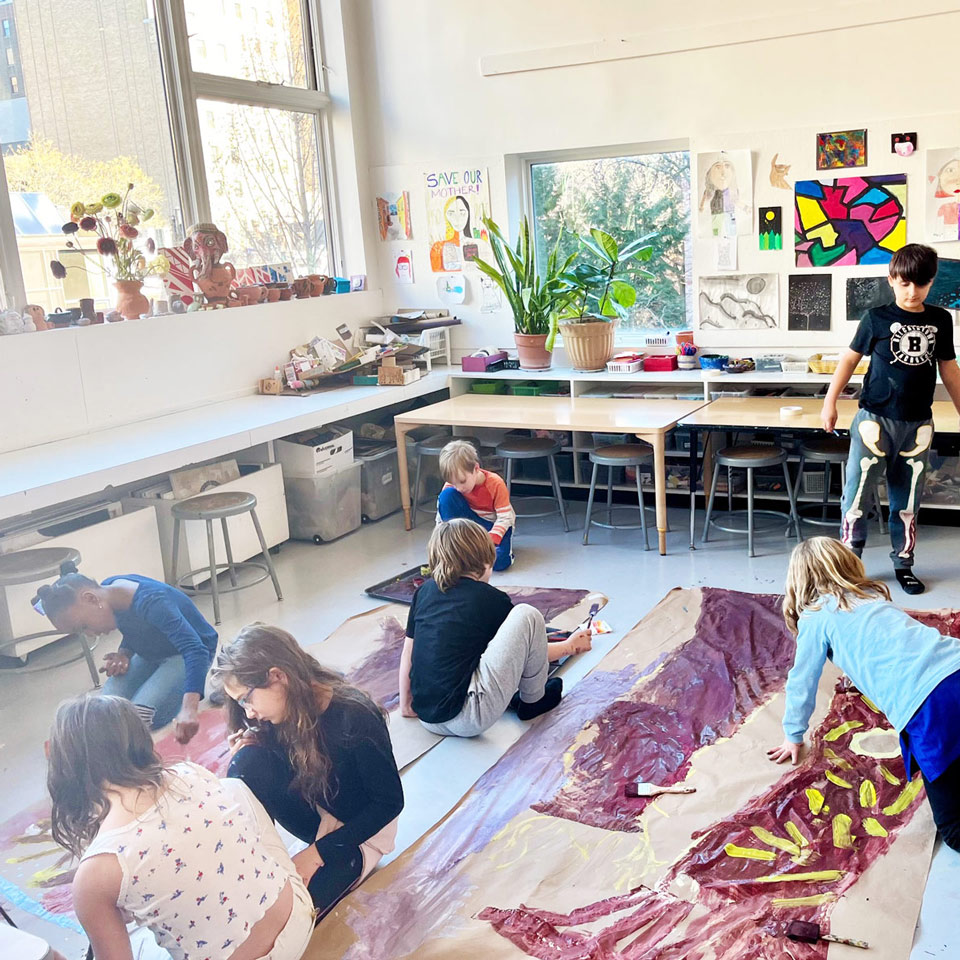Expressing Learning Through Plays: A Vibrant C&C Tradition
In 1925, Lela Stott’s VIIIs became passionate about the injustices facing Pennsylvania coal miners. The children created a play to express what they had learned. Rather than a memorization of lines, the play, written collectively by the children, demonstrated their knowledge and understanding.
That tradition – synthesizing information learned throughout the school year, choosing issues, events, and scenes to represent and dramatize, solving problems collectively, and creating historically appropriate music, scenery, and props – continues 100 years later. This unparalleled process starts with the VIIIs and continues through the XIIIs, increasing in complexity and sophistication each year.
The play is a culminating expression of learning; composing the play is often more engaging and elaborate than the performance itself. Founder Caroline Pratt once said, “The children make their plays for nobody’s benefit and enjoyment but their own.”
This year, the VIIIs kicked off the spring plays, presenting their study of the Lenape through the lens of the seasons. Learning about indigenous people has been a long-standing tradition at C&C; minutes from a meeting dated November 15, 1948, reported it as “a common theme” for third graders (VIIIs).
“Studying the indigenous populations of New York City allows students to deconstruct the modern world and to think about the past with a local, human perspective,” said VIIIs Group Teacher Jay Frankel. “Students enjoy the experience of imagining the natural world thriving on the island of Manhattan. Understanding their basic and higher needs allows them to dive into self-guided research creatively. The play is an outgrowth of their creativity and their knowledge from a variety of resources.”



Children glean their knowledge from multiple sources, such as hosting cultural guests and taking field trips. Other opportunities include:
- Honing research skills, bolstered by the support of C&C’s Research Librarian and the carefully curated collections in the Library, and expressing their knowledge in Art, Shop, and many of their other classes.
- Designing and painting murals for plays, as well as creating indigenous clay animals from Lenape culture of the 16th and 17th centuries, and then placing these animals in dioramas that accurately illustrate their natural environment.
- Sprouting herbs following the planting methods of the Lenape, and keeping a diligent log book with careful measurements, notes, and observations.
- Applying complex measurement and other math skills into their work in the woodshop as they create historically correct artifacts and tools.
- Dramatizing their Social Studies content in Rhythms class, eventually forming the basis of their play’s themes and dramatic arc.
- Examining current Lenape events, such as the Rising Nation River Journey, the Indigenous Seed Keepers Network, and the artwork of Joe Baker at the Met.
“We focused our learning around making connections to the 8 Lenape Laws,” added Lucy Christiana, VIIIsL Group Teacher.
The 8 Lenape Laws:
- Everything in nature has a spirit, and should be given thanks, gifted and asked permission before taking from it.
- Take care of our Mother Earth.
- Mother Earth gives us all we need.
- We are all relatives. Respect all relations.
- Take care of our relatives.
- Think good thoughts when we speak.
- Everyone has an ability to heal.
- Don’t be greedy. Do not take more than necessary to live.
An indelible mark of understanding is left on children. Reflected one VIII, “I think it was great because we got to honor the Lenape.”
Thank you to Elise Bauer, Claire Klinger, Kate Tarlow Morgan, Jay Frankel, Lucy Christiana, and C&C’s Archives for their contributions to this brief.
